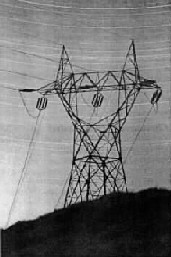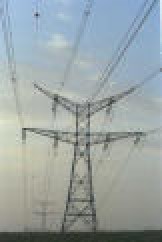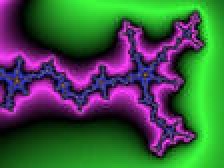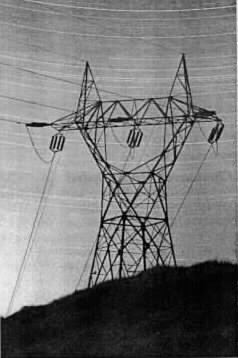[back] EMF
articles
Live and Extremely Dangerous
by Professor Denis Henshaw
 http://www.electrosensitivity.org.uk/
http://www.electrosensitivity.org.uk/
Click here
for link to Professor Henshaw's website on Human Radiation Effects at
Physics Dept Bristol University.
The following report from a respected UK newspaper is included here not only
for its science which points at some of the links, the why and how EMFs
hurt us and interestingly it is the electrical component and not the
magnetic he focuses on but because Professor Denis Henshaw is that rare bird –a
scientist who is also worldly and media aware. This piece indicates the
difficulty faced by those pointing out what the 'establishment' does not wish to
hear, what Professor JK Galbraith in a different context called 'conventional
wisdom', resisting all challenges to its hegemony. So challenges which while
scientifically sound are upsetting in themselves, ‘heretical’ with its religious
overtones as the reporter describes it, and even more so in their enormous
implications for future strategy,‘pylons as relics of the mid-20th century’ in
the final paragraph. How safe and confident can we feel when our watchdog and
setter of standards, the NRPB, our protection board is offensive and
repeatedly forced to apologise. Abuse the messenger it seems is the alarming
message to us.
THE TIMES, MONDAY MARCH 12 2001
Live and extremely dangerous
A study last week linked power lines to leukaemia. Physicist Denis Henshaw
says they also cause skin cancer, lung cancer, depression and 60 suicides a
year. Interview by Anjana Ahuja.
Knowing what he knows, Denis Henshaw says he would never live in a house near
overhead power lines. A physics professor at Bristol University, he has been
studying the health effects of power lines since 1994. Last week, one of the
issues he has championed for years – the link between childhood leukaemias and
power lines – finally came out into the open. The National Radiological
Protection Board (NRPB) concluded that exposure to magnetic fields may double
the chances of a child developing the disease.
While welcoming the report, Henshaw says that the focus on childhood
leukaemia, which is extremely rare, is a smokescreen that has served to conceal
the real perils of power lines.
He estimates that power lines notch up the following grim tally each year:
eight cases of childhood leukaemia, 14 cases of skin cancer, up to 400 cases of
lung cancer, several thousand cases of illnesses associated with air pollution (
such as respiratory disease, allergies and aggravated asthma), 9,000 cases of
depression and 60 suicides.
The vast majority of these cases, he says, are caused by electrical effects,
not by the magnetic fields that were under investigation by the NRPB. “These are
figures comparable to the number killed on roads” says Henshaw, 54, whose smart
appearance makes him look more like a company executive than a heretical
professor. “But road deaths are spread throughout the country, while only one in
50 of the population lives under power lines. So the rate of casualty here is 50
times greater than the risk of being on the road.”
He wants to see planning laws frozen so that no more homes are built near
power lines, and new cables are strung up as far as practicable from populated
areas or, where possible, buried.
He argues that although there may be no absolute causal proof yet, the
correlations are so strong and the biological mechanisms so plausible that there
should be a programme of “prudent avoidance”. He says: “To say we need another
ten years of research means we will go precisely down the BSE route.”
The Department of Health is listening – its officials have met him and seen
his experiments – but his views have largely been ignored or rubbished. The
electricity industry has accused him of scaremongering. He is not bothered:
“People who accuse you of scaremongering are those who don’t want the truth to
come out. The utility companies can never admit in public that there is an
effect, because that would be admitting liability.”
But he is bothered by the personal abuse sometimes levelled at him. It is
easy to compare him to Richard Lacey, the scientist who foresaw that BSE could
infect human beings, and to Sir Richard Doll, who first posited the link between
smoking and lung cancer, which was decried for decades by tobacco companies.
“It’s exactly the same problem,” he agrees.
 “He (Doll) was described as a young upstart and suffered other terms of abuse
not terribly different from those used against us. The industry has written
stinking letters about me, but thankfully the university has stood by me. I have
been libelled on a number of occasions. We have had to remind people that we
will take action against them.”
“He (Doll) was described as a young upstart and suffered other terms of abuse
not terribly different from those used against us. The industry has written
stinking letters about me, but thankfully the university has stood by me. I have
been libelled on a number of occasions. We have had to remind people that we
will take action against them.”The NRPB has offended him three times; on each
occasion he has received an apology. He will not be pressed on the precise
nature of the abuse, but says that the NRPB once claimed that his assessments of
risk were coloured by the need to win research funds. He adds, somewhat
indignantly, that his funds from the Medical Research Council and the Department
of Health have been won through the normal process of academic assessment. The
Foundation for Children with Leukaemia has also supported his work.
Ironically, the latest NRPB report suggests that Henshaw’s work is worth
further investigation. Yet the organisation has never consulted him personally
on power lines and health, which he finds “extraordinary”. Dr Michael Clark,
from the NRPB, says: “Professor Henshaw is a perfectly reputable scientist who
has an interesting and plausible hypothesis. But it is a long way from that to a
demonstrable health effect.”
The dominant effect of the magnetic field, Henshaw says, is in influencing
mood. His survey of existing data leads him to the figure of 60 suicides a year,
as well as thousands of cases of depression. “There have been papers on this for
20 years,” he says.
“What strikes me is that they all show positive correlations and are not
conflicting in any way. This is considered biologically plausible – one
mechanism is that magnetic fields disrupt the production of melatonin in the
body, which regulates mood. Another is that magnetic fields induce electrical
currents in the brain, which create an electrical imbalance.
“Melatonin is produced by the pineal gland at night. Populations living near
these things are obviously sleeping near them, and they show striking effects.
Utility workers show lower effects but they are exposed during the daytime, so
that’s what you would expect.
He rejects the popular claim that people who live near power lines are
depressed for other reasons, perhaps because they simply don’t like living near
them, or because they tend to belong to lower income groups.
 But Henshaw and his colleague, Dr Peter Fews, say that the gravest physical
health problems stem form the electrical fields bathing power lines. In 1996
they reported that cables from domestic appliances, such as hairdryers, acts
like magnets for radioactive substances. These substances were formed by the
natural decay of radon in the atmosphere into so called radioactive “daughters”.
The oscillating implication was that radioactive products were attracted to
oscillating electrical fields. “Nobody seemed to spot the importance of that,”
says Henshaw.
But Henshaw and his colleague, Dr Peter Fews, say that the gravest physical
health problems stem form the electrical fields bathing power lines. In 1996
they reported that cables from domestic appliances, such as hairdryers, acts
like magnets for radioactive substances. These substances were formed by the
natural decay of radon in the atmosphere into so called radioactive “daughters”.
The oscillating implication was that radioactive products were attracted to
oscillating electrical fields. “Nobody seemed to spot the importance of that,”
says Henshaw.
“The importance is that these substances, which are known carcinogens, can
land on you. When you stand under a power line, the electrical field distorts
around you because you are a conductor. These pollutants are oscillating back
and forth around you at 50Hz and they can land on you. Applying the NRPB’s own
risk factors, you can predict an increase in skin cancer.
He found that if a person spent 10 per cent of his time close to power lines,
he would be subjected to up to twice the acceptable level of radioactivity, even
in windy and wet weather. “Critics said that people don’t spend 10 per cent of
their time near power lines, but my argument is that if they live there, they’re
entitled to,” says Henshaw.
However, radon daughters pale into insignificance next to another set of
villains named by Henshaw – corona ions. High-voltage power lines produce a
strong electrical field on the line itself. This field is big enough to ionise
the air around it – in other words, to strip electrons from atoms.
The effect is like nudging a line of dominoes: the ionisation of one atom
triggers the ionisation of another, leading to a chain reaction. The result is a
line of charged, highly reactive particles streaming away from the power cable.
Henshaw has measured the streams as far away as several kilometres from the
line.
 These charged particles, or corona ions, act as magnets for air pollutants,
including carcinogens such as aromatic hydrocarbons from car exhausts. The
electrical charge gives the pollutant, when inhaled, a greater ability to stick
to the lung – so rather than being exhaled, pollutants become lodged. “New York
scientists have found that if there is a charge, pollutants of this size are two
or three times more likely to be deposited in the lungs.” He says. “In the
confined space of the lungs and airways, this charge makes a big difference.
These charged particles, or corona ions, act as magnets for air pollutants,
including carcinogens such as aromatic hydrocarbons from car exhausts. The
electrical charge gives the pollutant, when inhaled, a greater ability to stick
to the lung – so rather than being exhaled, pollutants become lodged. “New York
scientists have found that if there is a charge, pollutants of this size are two
or three times more likely to be deposited in the lungs.” He says. “In the
confined space of the lungs and airways, this charge makes a big difference.
“The upshot is that you are retaining air pollutants, some of which are known
to be linked to lung cancer, in your lungs. You can then do a rigorous
assessment for lung cancer, which I put at between 250 and 400 cases a year.
There is actually a paper – not mine – that shows a doubling of lung cancer
under power lines, but it hasn’t been talked about.”
When the other effects of air pollutants, such as allergies and respiratory
disease, are factored in, Henshaw estimates that corona ions probably damage a
few thousand people every year. He also points out that corona ions have been
known about since the Fifties, and have been studied extensively by the
industry.
His final analysis is simply this: there is a vast body of evidence
to indicate an association between power lines and ill-health. It
includes cancers and non-cancers, affects both adults and children, and
the risk of ill-health is high enough to justify immediate action. This
does not mean that people living near power lines should panic – the
risk of death on the roads does not panic car-owners into selling their
vehicles. Likewise, even if several thousand people are at risk from
power lines, the probability of an individual falling ill is small.
However, given the response to BSE and the rail tragedies, the refusal
to acknowledge that there is a problem or to act on these statistics
confounds Henshaw. “I am struck by what society accepts,” he says “The
Paddington rail crash killed 31 and triggered a £1 Billion commitment to
advance train protection. Governments have to respond to risk
assessment, not hide behind wanting strict causal proof. Risk assessment
grounded the whole Concorde fleet. I’m saying that this is comparable.
“A hundred years from now, we will look back at pylons as relics of the
mid-20th century. It probably won’t happen in five or ten years, but
eventually a new generation will come along, change things, and wonder
why we did nothing” |
 |
As a postscript we are unable to do justice here in words to the dramatic and
sweeping picture which appeared in several UK papers on 21/2/2004 of 1300
fluorescent strip bulbs stuck vertically in the ground and glowing brightly from
the electrical field of the 400,000 volt cables suspended from pylons passing
overhead. This artistic array off the M4 near Bristol was created by Richard
Box, go to:
'Richard
Box Archive' Artist in residence at the Department of Physics of nearby
Bristol University. Professor Henshaw of the same department explained the
dangers to inquiring journalists as those he indicated in the above article.
 But Henshaw and his colleague, Dr Peter Fews, say that the gravest physical
health problems stem form the electrical fields bathing power lines. In 1996
they reported that cables from domestic appliances, such as hairdryers, acts
like magnets for radioactive substances. These substances were formed by the
natural decay of radon in the atmosphere into so called radioactive “daughters”.
The oscillating implication was that radioactive products were attracted to
oscillating electrical fields. “Nobody seemed to spot the importance of that,”
says Henshaw.
But Henshaw and his colleague, Dr Peter Fews, say that the gravest physical
health problems stem form the electrical fields bathing power lines. In 1996
they reported that cables from domestic appliances, such as hairdryers, acts
like magnets for radioactive substances. These substances were formed by the
natural decay of radon in the atmosphere into so called radioactive “daughters”.
The oscillating implication was that radioactive products were attracted to
oscillating electrical fields. “Nobody seemed to spot the importance of that,”
says Henshaw. http://www.electrosensitivity.org.uk/
http://www.electrosensitivity.org.uk/ “He (Doll) was described as a young upstart and suffered other terms of abuse
not terribly different from those used against us. The industry has written
stinking letters about me, but thankfully the university has stood by me. I have
been libelled on a number of occasions. We have had to remind people that we
will take action against them.”
“He (Doll) was described as a young upstart and suffered other terms of abuse
not terribly different from those used against us. The industry has written
stinking letters about me, but thankfully the university has stood by me. I have
been libelled on a number of occasions. We have had to remind people that we
will take action against them.” These charged particles, or corona ions, act as magnets for air pollutants,
including carcinogens such as aromatic hydrocarbons from car exhausts. The
electrical charge gives the pollutant, when inhaled, a greater ability to stick
to the lung – so rather than being exhaled, pollutants become lodged. “New York
scientists have found that if there is a charge, pollutants of this size are two
or three times more likely to be deposited in the lungs.” He says. “In the
confined space of the lungs and airways, this charge makes a big difference.
These charged particles, or corona ions, act as magnets for air pollutants,
including carcinogens such as aromatic hydrocarbons from car exhausts. The
electrical charge gives the pollutant, when inhaled, a greater ability to stick
to the lung – so rather than being exhaled, pollutants become lodged. “New York
scientists have found that if there is a charge, pollutants of this size are two
or three times more likely to be deposited in the lungs.” He says. “In the
confined space of the lungs and airways, this charge makes a big difference.